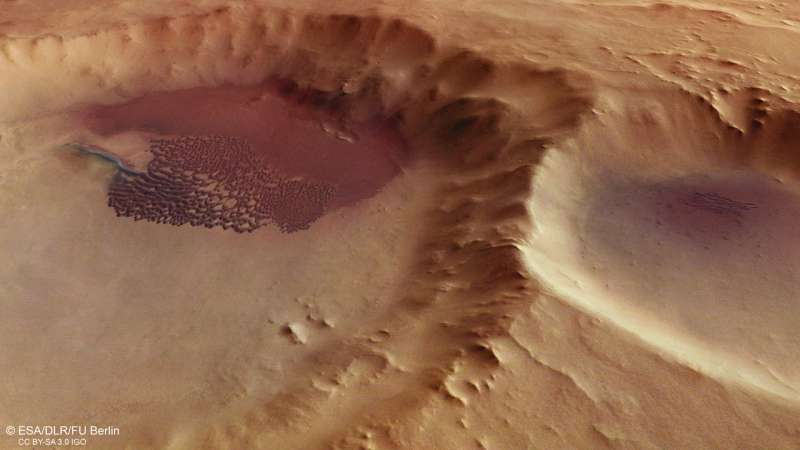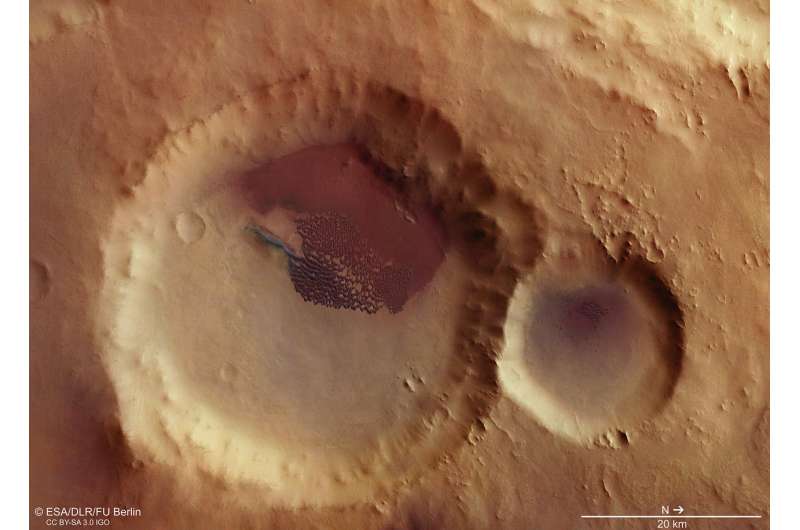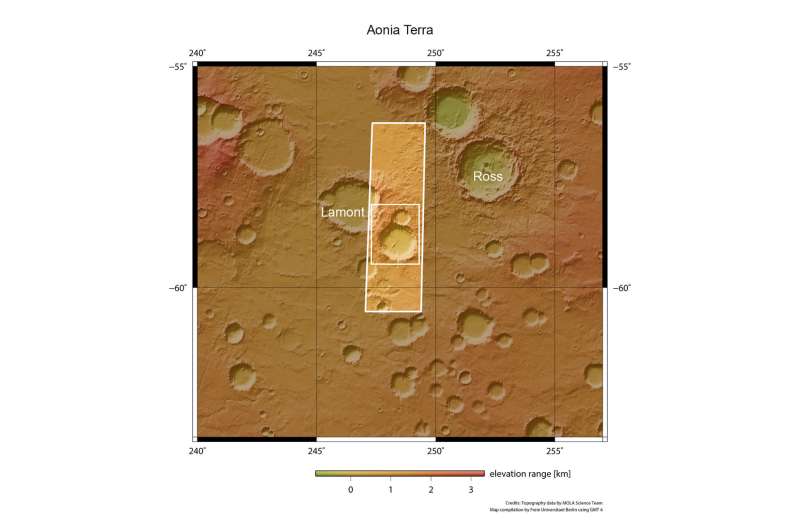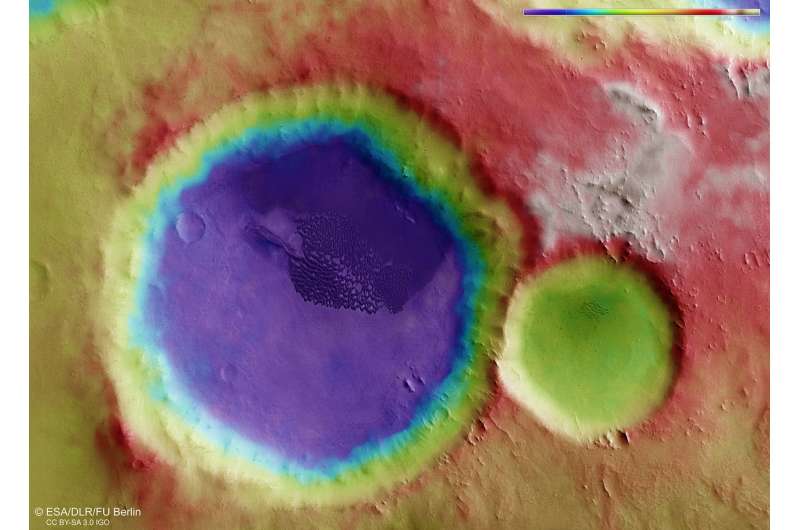Perspective view of a wind-blown dune field inside an unnamed, 48 km-wide impact crater in the southern highlands of Mars. The dune field includes sickle-shaped dunes known as barchans, and parallel ridges of dunes called transverse dunes. A smoothly distributed sand sheet stretches between the dunes and the western wall of the crater, and a single elongated transverse dune extends beyond the main field. Dunes can also be seen in the crater to the right in this scene. Credit: ESA/DLR/FU Berlin, CC BY-SA 3.0 IGO
Dunes are prominent indicators of prevailing winds, as can be seen on this crater floor on Mars, imaged by ESA's Mars Express on 16 May.
Depressions such as impact craters can act as traps for sediments that have been blown in from elsewhere, accumulating in various patterns whipped up by strong winds.
The dune field in this unnamed 48 km-wide impact crater in the southern highlands of Mars includes sickle-shaped dunes known as barchans, and parallel ridges of dunes called transverse dunes.
A smoothly distributed sand sheet stretches between the dunes and the western wall of the crater.
Barchans are the most common dune type found on Mars, and are also prevalent in Earth's deserts. The shallower slope faces the wind, with the steeper, curved slope downwind, the 'horns' of the individual dunes pointing in the direction the wind is blowing. In this example, a southeasterly wind at the time of dune formation can be assumed.
Many nearby craters in this region also host dunes, and show a northwest shift of their dune fields relative to the crater centre, arguing for a uniform wind direction from the southeast.
-
Aerial view looking down onto a wind-blown dune field inside an unnamed, 48 km-wide impact crater in the southern highlands of Mars. A smaller crater to the right also hosts dunes. Credit: ESA/DLR/FU Berlin, CC BY-SA 3.0 IGO
-
The region outlined by the larger white box indicates the area imaged during Mars Express orbit 16934 on 16 May 2017. The small box in the centre highlights the focus of the associated image release. In this context image, north is up. Credit: NASA MGS MOLA Science Team
-
This image shows the relative heights of a region in the southern highlands of Mars, focusing on a 48 km-wide crater (left) that is filled with wind-blown dunes. Credit: ESA/DLR/FU Berlin, CC BY-SA 3.0 IGO
Provided by European Space Agency



























